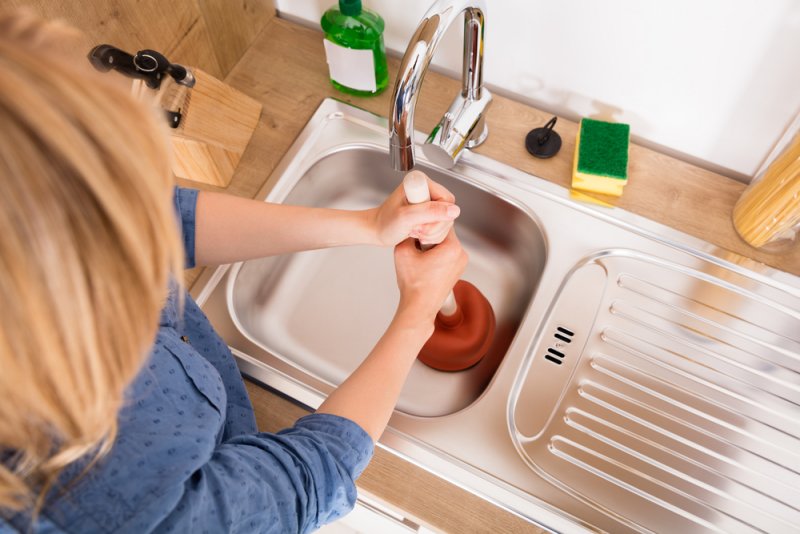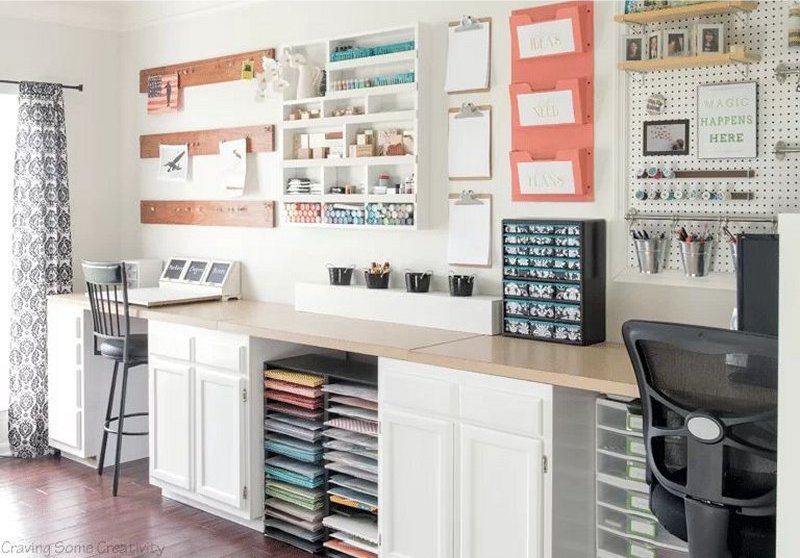
The gurgle that won't go away, the slow-draining sink, the shower stall that turns into a mini-lake – few household annoyances are as universally frustrating as a clogged drain. While seemingly minor, a persistent blockage can disrupt daily routines, lead to unsanitary conditions, and even result in costly plumbing repairs if left unaddressed. Understanding the common culprits behind these subterranean traffic jams is the first step toward prevention and effective resolution.
From the bathroom to the kitchen, laundry room, and even outdoor sewer lines, drains are constantly encountering a myriad of substances. While some blockages are accidental, many are the result of everyday habits that, when combined, create formidable obstacles. This article will delve into the 10 most common things that clog your drains, offering practical advice on how to prevent them and what steps to take when a clog inevitably strikes.
The Top 10 Drain-Clogging Culprits and Their Solutions
Knowing what to look for is half the battle. Here are the usual suspects found lurking in your pipes:
1. Hair
Why it Clogs: Hair, especially long strands, is a primary culprit in bathroom drains. It doesn't dissolve in water and easily wraps around soap scum, grease, and other debris, forming dense, sticky mats that are incredibly difficult for water to pass through. Over time, these hairballs become solidified obstacles.
Prevention: The simplest solution is a drain screen or hair catcher. These inexpensive devices sit over the drain opening, trapping hair before it enters the pipes. Regularly remove accumulated hair from the screen and dispose of it in the trash.
What to Do: For minor hair clogs, a small drain snake or a pair of needle-nose pliers can often retrieve the blockage. For deeper clogs, a combination of baking soda and vinegar (pour 1 cup baking soda, wait a few minutes, then follow with 1 cup white vinegar; let sit for 30 minutes to an hour, then flush with hot water) can help break down the organic matter. Enzymatic drain cleaners, which use bacteria to digest hair and grease, are a safer, slower alternative to caustic chemical cleaners.
2. Grease, Fats, and Oils (FOG)
Why it Clogs: Often poured down the kitchen sink after cooking, hot grease, fats, and oils might seem harmless in their liquid state. However, as they cool, they solidify and cling to the interior of pipes. This creates a sticky coating that acts like flypaper, trapping food particles, soap scum, and other debris, leading to significant and stubborn blockages.
Prevention: Never pour FOG down any drain. Instead, allow grease to cool and solidify in the pan, then scrape it into a container (like an old milk carton or coffee can) and dispose of it in the trash. For minimal residue, wipe greasy pans with a paper towel before washing.
What to Do: For fresh, minor FOG clogs, flushing with very hot tap water (not boiling, which can damage PVC pipes) and a squirt of dish soap can sometimes help liquefy and move the grease. For more significant blockages, enzymatic drain cleaners are effective over time. Avoid chemical drain cleaners, as they may only partially dissolve the grease and can potentially damage pipes or create more solid masses further down the line. Professional hydro-jetting may be necessary for severe FOG buildup.
3. Food Scraps
Why it Clogs: While garbage disposals are designed to grind food, they are not invincible, nor are all food items suitable for them. Starchy foods like pasta, rice, potato peels, and bread can expand and create thick, pasty clogs. Fibrous foods like celery strings, banana peels, and corn husks can wrap around the disposal blades and form tangled masses. Even small bits, over time, contribute to buildup.
Prevention: Use a sink strainer to catch food particles before they enter the drain. Scrape plates thoroughly into the trash or compost bin before rinsing. Be mindful of what goes into your garbage disposal; when in doubt, throw it out.
What to Do: For minor food clogs, a plunger is often effective. Ensure the sink is partially filled with water to create a good seal. For deeper clogs, the baking soda and vinegar method can help break down some organic matter. If the garbage disposal is jammed, ensure it's off, and try to clear it using an Allen wrench (usually found at the bottom of the disposal) or by carefully pulling out obvious obstructions with pliers.
4. Soap Scum & Mineral Deposits
Why it Clogs: Bar soap contains fats and talc that, when combined with the minerals in hard water (calcium and magnesium), create a sticky, waxy substance commonly known as soap scum. This residue adheres to pipes, narrowing their diameter and providing a rough surface for hair and other debris to cling to, exacerbating clogs. Mineral deposits from hard water can also build up independently, forming hard scales.
Prevention: Consider switching to liquid soaps or body washes, which contain fewer hard-to-dissolve fats. Installing a water softener can significantly reduce mineral buildup throughout your plumbing system. Regularly flush drains with hot water after use to help minimize buildup.
What to Do: For minor buildup, a hot water flush followed by baking soda and vinegar can help. For persistent issues, enzymatic cleaners can slowly dissolve the organic components of soap scum. Regular cleaning of visible drain areas can also prevent buildup from progressing further into pipes.
5. Coffee Grounds
Why it Clogs: Many mistakenly believe that because coffee grounds are small and seemingly dissolve in water, they're safe to rinse down the sink. However, coffee grounds do not dissolve. Instead, they clump together into a thick, muddy sludge that settles in bends and traps in pipes, acting like cement over time when mixed with grease or other debris.
Prevention: Always dispose of coffee grounds in the trash or compost pile. They make excellent compost and can even be used as a natural fertilizer for some plants.
What to Do: A plunger can sometimes dislodge fresh coffee ground clogs. For more stubborn blockages, hot water flushing may help, but it's important to avoid pushing the grounds further down. Manual removal (if accessible) is best. Avoid harsh chemical drain cleaners, as they generally don't work well on compact grounds and can worsen the problem.
6. "Flushable" Wipes & Feminine Hygiene Products
Why it Clogs: Despite marketing claims, "flushable" wipes are rarely truly flushable. Unlike toilet paper, which is designed to immediately disintegrate in water, these wipes are often made with synthetic fibers that retain their integrity. They accumulate in pipes, creating massive, immovable blockages, often referred to as "fatbergs" when combined with FOG in municipal sewer systems. Feminine hygiene products like tampons and pads are designed to absorb water and expand, making them instant drain blockers.
Prevention: The rule is simple: if it's not toilet paper, it goes in the trash. This applies to all wipes (baby, disinfecting, facial), paper towels, cotton balls, dental floss, and feminine hygiene products.
What to Do: For these types of clogs, a strong plunger might dislodge a minor blockage in a toilet. However, for anything substantial, a drain snake is usually required to physically pull the item out. For severe blockages, particularly deeper in the system, professional plumbing assistance is almost always necessary. Never use chemical drain cleaners with these items, as they will not dissolve them and can create hazardous chemical reactions.
7. Foreign Objects
Why it Clogs: Accidentally dropped items are a surprisingly common cause of clogs, especially in bathroom sinks and toilets. This can include small toys, jewelry, cotton swabs, Q-tips, dental floss, bottle caps, and even small pieces of soap. These items get lodged in the pipework, creating an immediate and often complete blockage.
Prevention: Be mindful of small items around sinks and toilets. Keep bathroom counters clear, especially those used by children. Consider using stopper or drain cover with smaller openings in high-risk areas.
What to Do: If the object is visible, use tweezers, pliers, or even a small magnet (for metal objects) to retrieve it. For items lodged deeper, carefully attempting to remove the P-trap (the U-shaped pipe directly under the sink) can often allow manual retrieval. For toilet clogs, a toilet auger (closet auger) is designed to retrieve or push through foreign objects without damaging the porcelain. If unsuccessful, call a plumber.
8. Dirt & Silt
Why it Clogs: While dirt and mud might seem like they'd just wash away, they consist of fine particles that, when introduced into drains (e.g., from washing off muddy shoes, cleaning gardening tools, or rinsing plants), can settle and compact inside pipes. Over time, this compaction creates a dense, concrete-like blockage, especially in slow-moving drains.
Prevention: Shake off excess dirt from shoes and gardening tools outdoors before bringing them inside. Use a utility sink for heavy-duty cleaning if available. Avoid rinsing large amounts of soil or sand down any household drain.
What to Do: For minor dirt clogs, a powerful hot water flush can sometimes move the sediment. A baking soda and vinegar treatment followed by hot water may also help. For compact dirt, a drain snake can sometimes break up the blockage. For significant accumulation, especially in outdoor lines or main drains, professional hydro-jetting might be required to blast away the compacted material.
9. Tree Roots
Why it Clogs: This culprit is usually specific to outdoor drains or main sewer lines. Tree roots are naturally drawn to water and nutrients. Even the tiniest crack or loose joint in an underground pipe can provide an entry point for ambitious roots. Once inside, they grow and expand, forming a dense mass that traps waste and eventually creates a complete blockage of the sewer line, leading to widespread backups in the home.
Prevention: Be mindful of where you plant trees and large shrubs, especially fast-growing, water-seeking varieties. Regular professional sewer line inspections (using a camera) can identify root intrusion early. Some chemical root inhibitors can be flushed down toilets to deter root growth.
What to Do: Tree root clogs almost always require professional intervention. Plumbers use powerful augers with cutting blades to chop through the roots or hydro-jetting to blast them away. In severe cases, pipe repair or replacement may be necessary to prevent recurring intrusion.
10. Laundry Lint
Why it Clogs: The lint trap in your dryer isn't the only place where fabric fibers accumulate. Washing machines also shed tiny particles of lint from clothing. While some lint is caught by the machine's internal filter, a significant amount can be discharged with the wastewater into the laundry drain. Over time, these minute fibers intertwine and mat together, forming dense, felt-like clogs in the standpipe or drain line, especially when combined with soap residue and dirt.
Prevention: Regularly clean the lint trap in your washing machine (if it has one). Consider installing a mesh lint trap or filter over the end of the washing machine's drain hose where it empties into the standpipe.
What to Do: For laundry drain clogs, a plunger can sometimes dislodge the lint. A long, flexible drain snake specifically designed for laundry drains can reach and pull out the lint mass. Flushing with hot water and an enzymatic drain cleaner (designed to break down organic matter) can also be effective over time.
General Drain Maintenance & When to Call a Professional
Beyond addressing specific clogs, regular drain maintenance is crucial for preventing future issues.
- Hot Water Flush: Regularly flush all drains with very hot water for a few minutes, especially after using the sink.
- Baking Soda & Vinegar: Perform a baking soda and vinegar treatment monthly for proactive cleaning.
- Enzymatic Cleaners: Consider using enzymatic (biological) drain cleaners proactively as directed, as they are safer for pipes and the environment than harsh chemicals.
- Proper Plunger Use: Learn to use a plunger effectively for various drains – ensure a good seal and forceful strokes.
- Be Mindful: The golden rule of plumbing is "only flush the three P's: pee, poop, and paper (toilet paper)." Everything else belongs in the trash.
While DIY methods can resolve many minor clogs, knowing when to call a professional plumber is vital. If a clog persists despite your efforts, multiple drains are backing up, you suspect a main sewer line issue (like tree roots), or you hear strange gurgling noises from untouched drains, it's time to call in the experts. A professional can diagnose the problem accurately and use specialized tools like drain cameras, augers, or hydro-jetting equipment to clear even the toughest blockages without damaging your pipes.
Clogged drains are an undeniable part of homeownership, but by understanding the common culprits and adopting proactive prevention and smart resolution strategies, you can keep your pipes flowing freely. A little vigilance and consistent maintenance go a long way in ensuring your plumbing system remains clear, functional, and free from frustrating blockages.







0 Comments
Post Comment
You will need to Login or Register to comment on this post!